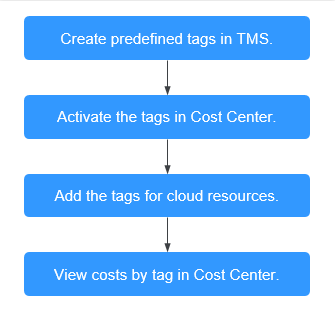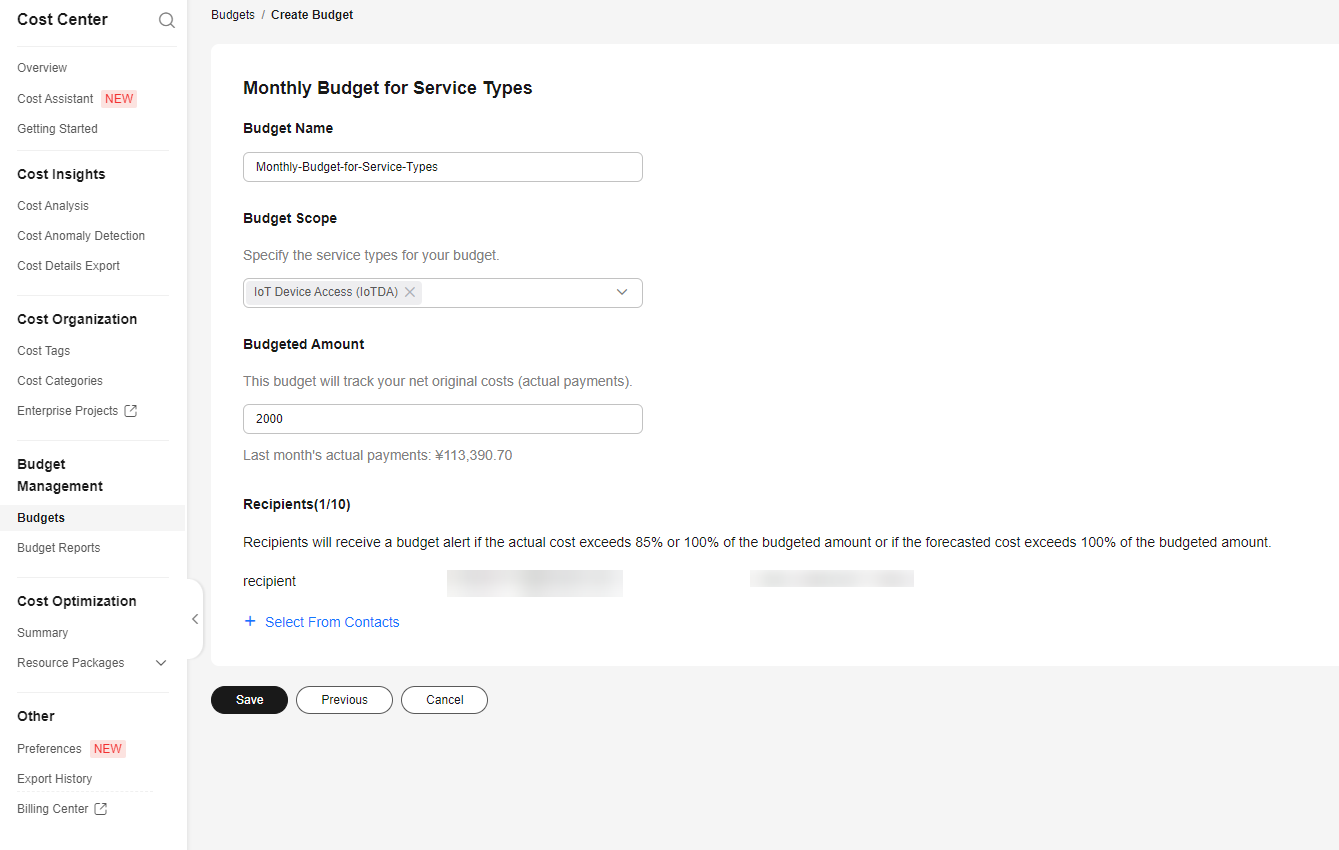Cost Management
As you migrate more of your services to the cloud, managing cloud costs becomes more important. For example, you may be more concerned with cost management when using IoTDA instances. The following describes how to manage costs from four dimensions: cost composition, allocation, analysis, and optimization, to help maximize return on your investment.
Cost Composition
Huawei Cloud Cost Center helps you manage resource costs with ease. However, you need to identify, manage, and optimize O&M costs by yourself.
Cost Allocation
A good cost accountability system is the basis of cost management. It ensures that departments, business teams, and owners are accountable for their respective cloud costs. Allocate costs to different teams or projects so that organizations have a clear picture of their respective costs.
Huawei Cloud Cost Center supports cost collection and reallocation with multiple tools for you to choose from.
- By linked account
The enterprise master account can categorize the costs of its member accounts by linked account to manage the accounting of those member accounts. For details, see Viewing Costs by Linked Account.
- By cost tag
You can use tags to sort your Huawei Cloud resources in a variety of different ways, for example, by purpose, owner, or environment. The following is the process of managing costs by predefined tags (recommended).
 Figure 1 Adding tags to cloud resources
Figure 1 Adding tags to cloud resources
For details, see Viewing Costs by Cost Tag.
- By cost category
You can use Cost Categories provided by Cost Center to split shared costs. Shared costs include the costs for the resources (compute, network, storage, or resource packages) shared across departments or the costs that cannot be directly split by cost tag or enterprise project configured for the resources. These costs are not directly attributable to a singular owner, and hence cannot be categorized into a singular cost category. In this case, you can define cost splitting rules to fairly allocate these costs among teams or business units. For details, see Viewing Cost By Cost Category.
Cost Analysis
To accurately control and optimize your costs, you need a clear understanding of what parts of your enterprise incurred different costs. Cost Center visualizes your original costs or amortized costs using various dimensions and display filters. You can analyze the trends and drivers of your service usage and costs from a variety of perspectives and scopes.
Cost Anomaly Detection provided by Cost Center also detects unexpected expenses promptly for tracing, monitoring, and analysis.
For details, see Performing Cost Analysis to Explore Costs and Usage and Enabling Cost Anomaly Detection to Identify Anomalies.
Cost Optimization
You can create different types of budgets on the Budgets page of Cost Center to track your costs against the budgeted amount you specified. If the budget thresholds you defined are reached, Cost Center will send alerts to the recipients you configured. You can also create budget reports and specify recipients to receive budget alerts if any at a frequency you configured.
Suppose you want to create a monthly budget of 2,000 for a pay-per-use ECS and expect to receive an alert if the forecasted amount exceeds 80% of the budgeted amount. You can refer to the following budget information.

For details, see Enabling Forecasting and Creating Budgets to Track Cost and Usage.
Feedback
Was this page helpful?
Provide feedbackThank you very much for your feedback. We will continue working to improve the documentation.See the reply and handling status in My Cloud VOC.
For any further questions, feel free to contact us through the chatbot.
Chatbot





